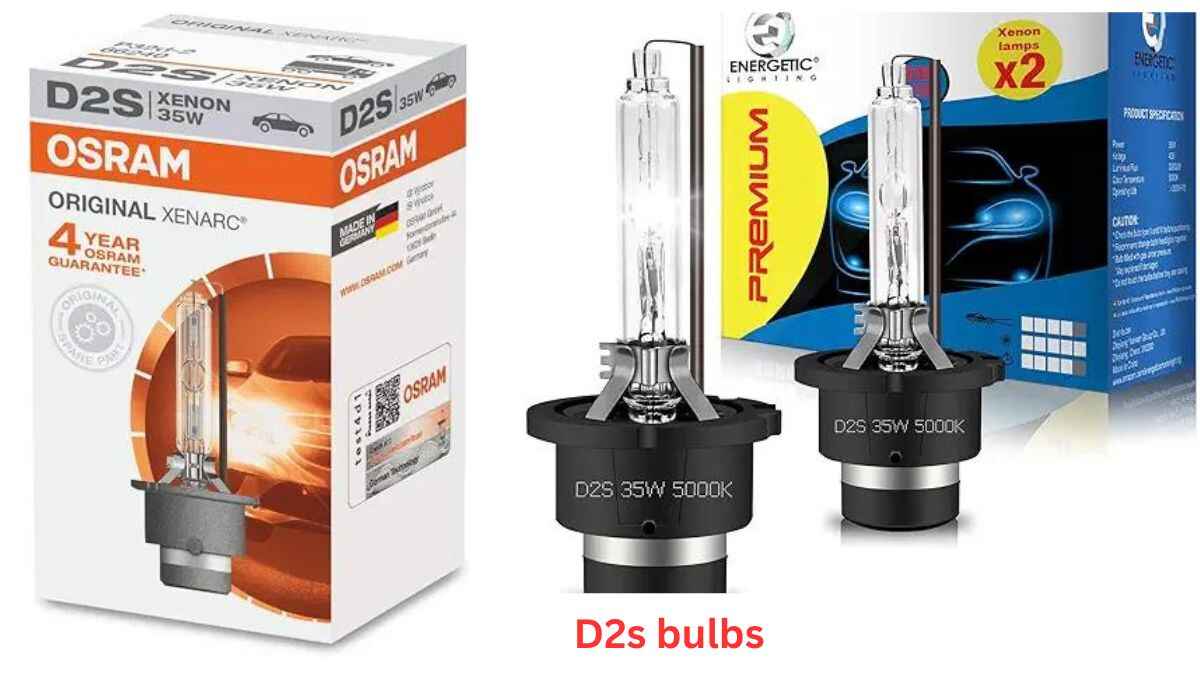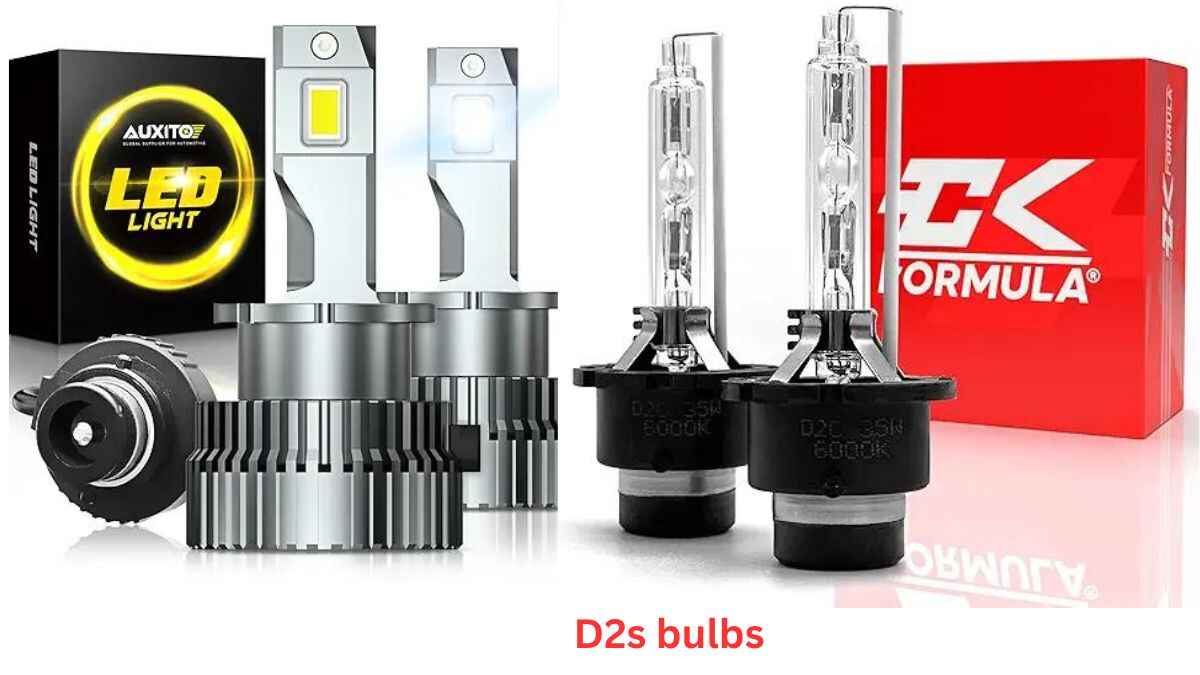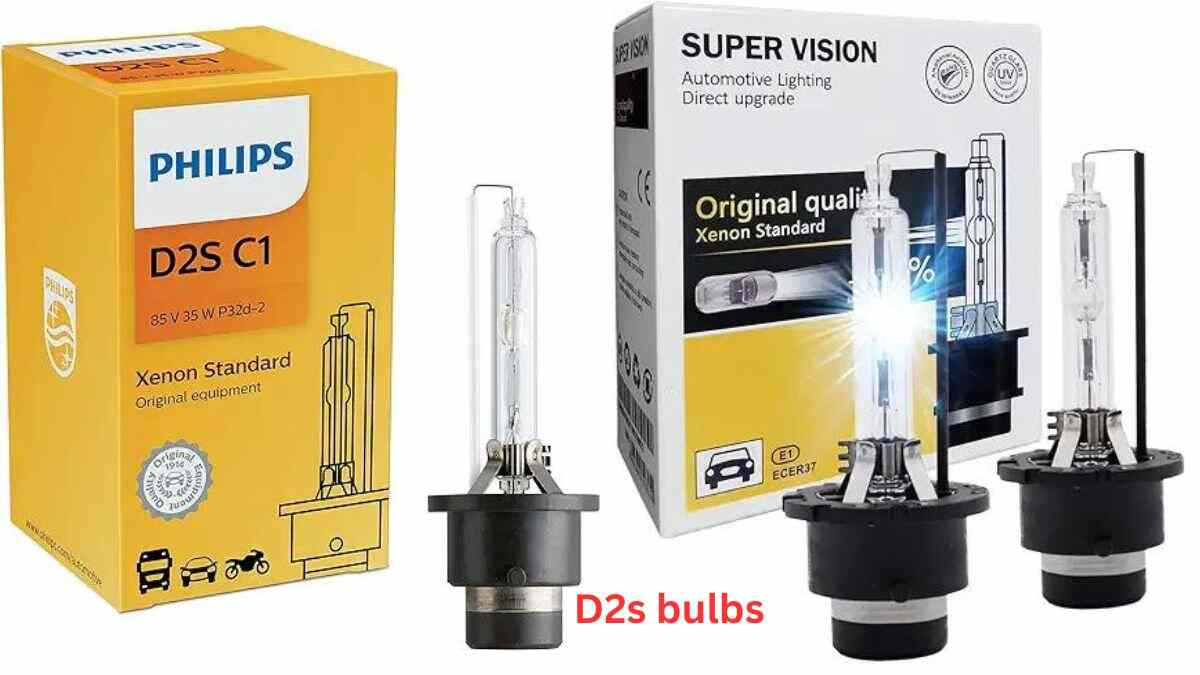Best and affordable 800k HID D2s bulbs : Check now
When it comes to car headlights, one common question is the comparison of D2H vs. D2S bulbs. Each offers unique features in brightness, compatibility, and installation. Deciding between D2H vs. D2S can be challenging, as each has distinct advantages and drawbacks depending on your car’s headlight system and lighting needs.

Understanding the D2S Bulb and D2H Bulb
Before diving into specifics, let’s understand what is a D2S bulb and how it differs from a D2H bulb. D2S bulbs are known for high-intensity discharge (HID) lighting, designed to work primarily with projector headlights. The D2H bulb, on the other hand, is a hybrid HID option that can fit both projector and reflector housings, offering flexibility for users who need compatibility with various systems.
What Does D2S Mean?
In the term D2S, “D” stands for discharge, “2” designates the model type, and “S” stands for shielded, meaning it’s designed for projector lenses. D2S bulbs are known for their bright, focused beam, providing exceptional visibility. Their structure and D2S construction make them highly efficient, especially in low-light conditions.
Differences Between D2S, D2H, and D2R Bulbs
Choosing between D2S vs. D2R or D2H requires an understanding of each bulb type. While D2S and D2R share a similar HID structure, the difference between D2R and D2S bulbs lies in their base design and application. The D2R bulb is designed for reflector headlights, while D2S bulbs are for projector systems. Using a D2S bulb in an H7 projector or a D2R bulb instead of a D2S can lead to compatibility issues and reduced lighting performance.
The difference between D2S and D2H lies mainly in compatibility. D2H bulbs are versatile, fitting both reflector and projector housings, while D2S is exclusive to projectors. This makes D2H bulbs an ideal option for those uncertain about their headlight setup.
D2S vs. H7 and D2H Bulb vs. H7 Comparisons
Another common comparison is D2S vs. H7. The H7 bulbs are halogen, while D2S bulbs are HID, giving D2S an edge in brightness and longevity. Similarly, the D2H bulb vs. H7 comparison shows that D2H bulbs provide HID brightness with adaptability for both projector and reflector setups, whereas H7 bulbs are generally less intense.
Xenon Bulb Construction: D2S, D2H, and D2R Explained
The construction of D2S, D2H, and D2R bulbs involves an arc tube filled with xenon gas, responsible for producing a bright, white light. This gas, combined with each bulb’s unique structure, differentiates them. The D2S bulb holder is specifically designed to fit projector systems, while D2H LED bulbs come with adaptable bases suitable for multiple headlight types.
Both D2S and D2H require careful installation for optimal performance. For example, D2S bulbs are securely held in place by specific bulb holders and projectors, while D2H headlight bulbs often include adapters for compatibility with a variety of housings.
Key Differences: D2S vs. D2H Bulb Comparison
Here’s a deeper look into the D2H vs. D2S bulb distinctions to help you make the best choice:
1. Compatibility
- D2S Bulbs: Ideal for projector headlights; focused, bright beam.
- D2H Bulbs: Versatile, fitting both projector and reflector systems.
2. Installation
- D2S: Straightforward in projector systems but requires specific housings.
- D2H: Easier installation with adaptable housing options for different systems.
3. Performance
- D2S: Bright and efficient; provides high visibility in projector setups.
- D2H: Slightly less focused in projectors but adaptable to reflectors, offering balanced brightness.
4. Cost and Longevity
- D2S: Typically more expensive due to its high performance in projectors.
- D2H: Cost-effective, adaptable, suitable for both housing types.

Are D2S and D2R Bulbs Interchangeable?
While D2S vs. D2R bulbs look similar, they serve different purposes. The difference between D2S and D2R includes beam shape, wattage, and base structure. D2S bulbs focus on projector applications, while D2R is ideal for reflector setups. Thus, using a D2S bulb instead of D2R may compromise visibility and lead to compatibility issues.
Energy Efficiency and Environmental Impact
The D2S bulb typically consumes more energy due to its higher wattage, translating into brighter output but a larger environmental footprint. D2H LED bulbs are generally more energy-efficient and suitable for users aiming to reduce power consumption.
Choosing Between D2S, D2H, and D2R Bulbs
For those deciding between D2S, D2H, and D2R bulbs, here are some factors to consider:
- Vehicle Compatibility: Verify if your car uses projector or reflector headlights.
- Budget and Performance Needs: D2S is typically pricier but excels in projectors, while D2H provides versatility.
- Ease of Installation: D2H is simpler to install across various systems.
Frequently Asked Questions: D2S and D2H Bulbs
1. What is D2S?
D2S is a high-intensity discharge (HID) bulb designed for projector headlights, offering a bright and focused light output.
2. Can I use D2S instead of D2R?
While both are HID bulbs, they aren’t interchangeable due to design differences, especially with beam shape and base type.
3. Is D2S the same as H11?
No, D2S bulbs and H11 are different. The D2S is an HID type for projectors, while H11 is typically a halogen or LED bulb for reflector setups.
4. What does D2S mean?
The term D2S indicates a discharge bulb model with a shielded design suitable for projector lenses.
5. D2S vs. H7—Which is Better?
D2S usually offers more brightness and lifespan due to its HID design, while H7 is a traditional halogen or LED.
Conclusion: Choosing Between D2H and D2S Bulbs
In conclusion, knowing the difference between D2H and D2S bulbs can make a significant impact on your lighting experience. The D2S bulb is a solid choice for vehicles with projector headlights, delivering focused, bright illumination. Meanwhile, the D2H light bulb offers more flexibility, making it a versatile option for both projector and reflector housings. Consider your car’s headlight type, budget, and installation ease when choosing between D2H/D2S bulbs.
Each option has its strengths, so understanding your needs and bulb compatibility can help you find the ideal lighting solution for a safer, well-lit driving experience
Hi, I’m Malik Suhail—an SEO expert, web designer, and passionate blogger with 2 years of experience. I specialize in crafting content that is not only informative but also tailored to meet the needs of my readers.
I write about diverse topics, always striving to simplify complex ideas and provide valuable insights that resonate with my audience. Whether it’s about SEO strategies, web design trends, or blogging tips, I am committed to delivering well-researched, practical, and easy-to-understand information.
My mission is to help readers navigate the digital world with confidence and clarity. I believe in adding value through authentic content that inspires action and delivers results.



